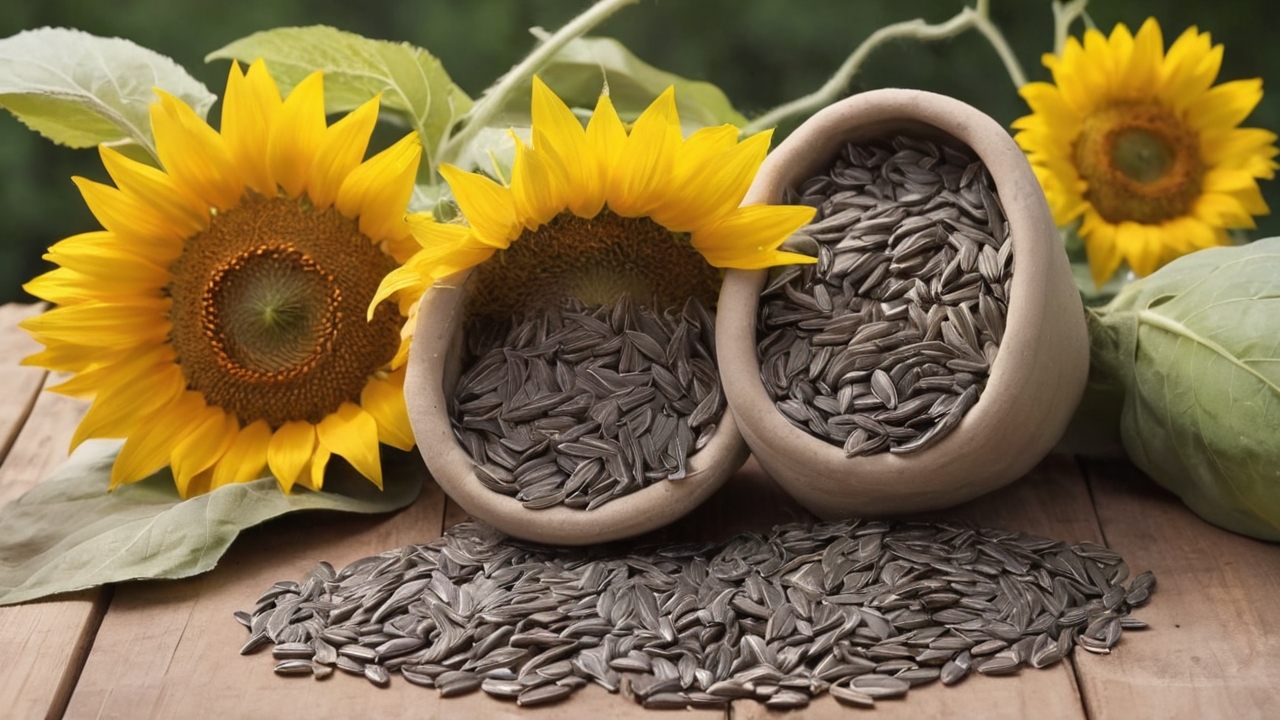Introduction
Starting sunflower seeds indoors can be a great way to get a head start on your garden and ensure healthy, robust plants. By starting your seeds indoors, you can control the growing conditions, protect the seedlings from pests and harsh weather, and extend the growing season. This article will provide you with a step-by-step guide on how to start sunflower seeds inside, including tips on selecting the right containers, preparing the soil, and caring for your seedlings. Whether you’re a beginner gardener or an experienced grower, this guide will help you successfully start your sunflower seeds indoors and enjoy a beautiful garden all summer long.
Table of Contents
Why start sunflower seeds indoors?
Starting sunflower seeds indoors offers several advantages that can enhance the success of your gardening endeavors. One of the main reasons to start sunflower seeds inside is the ability to control the growing conditions. By providing a consistent temperature, ample sunlight, and ideal moisture levels, you can give your sunflower seeds the best possible start. Additionally, starting seeds indoors protects them from pests and harsh weather conditions. This extra protection significantly decreases the chances of seedling damage or loss, resulting in a higher survival rate for your plants. Another benefit of starting sunflower seeds indoors is the ability to extend the growing season. By getting a head start on growth indoors, you can transplant your seedlings into the garden earlier, giving them more time to mature and produce beautiful blooms. So, if you’re looking to optimize your gardening experience and enjoy healthy, vibrant sunflowers, starting seeds indoors is definitely a worthwhile step to take.
Choosing the right materials
Choosing the right materials is crucial when starting sunflower seeds indoors. The first thing you’ll need is a container for planting. Opt for biodegradable pots or cell packs, as they can be transplanted directly into the ground without disturbing the roots. These containers should be at least 3-4 inches deep to provide ample space for the growing roots.
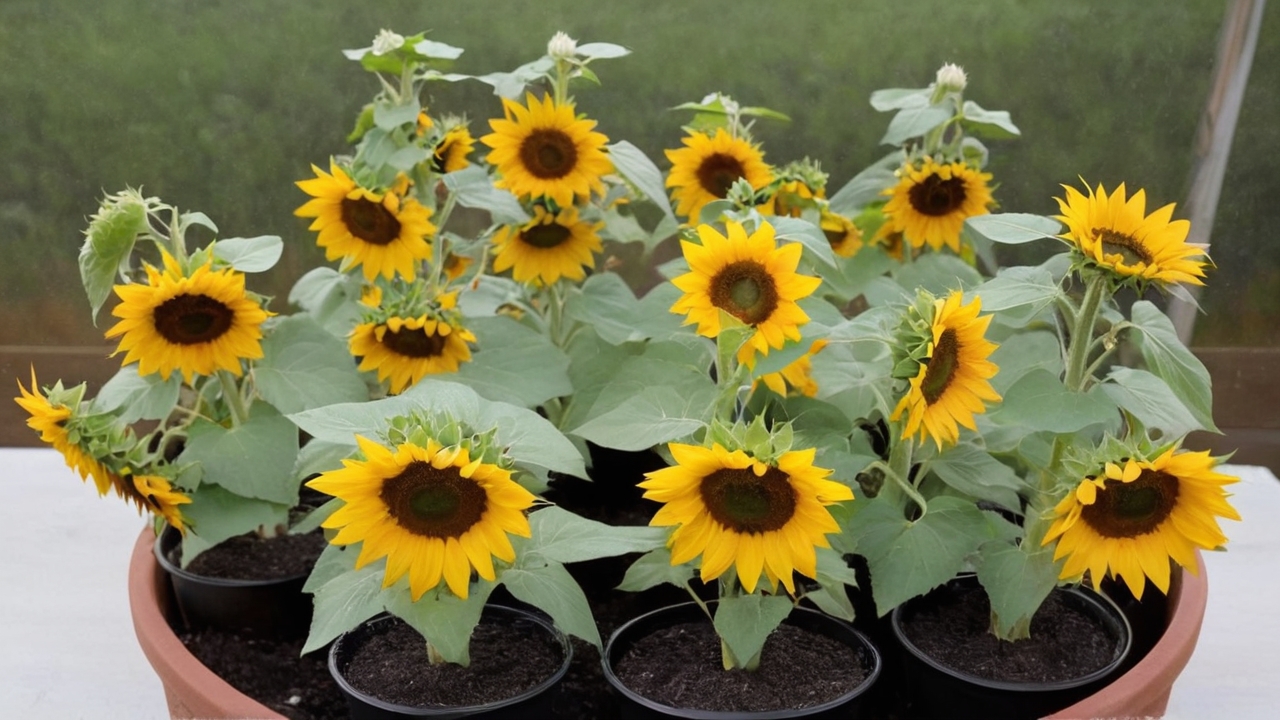
Next, you’ll need a high-quality seed starting mix. Garden soil should not be used since it might be excessively heavy and may harbor illnesses or pests. Seed starting mixes are lighter, sterile, and provide the ideal environment for seed germination.
Additionally, consider investing in a heat mat and grow lights. The heat mat will provide consistent warmth, promoting faster seed germination. Grow lights are essential for providing sufficient light and preventing seedlings from becoming leggy.
Finally, don’t forget about water. Use a spray bottle or misting system to keep the soil moist, but avoid overwatering, as it can lead to damping off disease.
By choosing the right materials, you’ll set your sunflower seeds up for success and increase the likelihood of healthy seedlings.
Preparing and planting sunflower seeds
Now that you have your materials ready, it’s time to prepare and plant your sunflower seeds. Before planting, soak the sunflower seeds in water for 24 hours. This will help speed up germination.
Next, fill your chosen container with the seed starting mix, ensuring it is moist but not waterlogged. Make a small hole in the center of the soil, about twice the depth of the seed. After planting the seed, carefully cover it with earth.

Position the containers in a warm and bright location, ideally near a south-facing window. If natural light is limited, supplement with grow lights set to provide 14-16 hours of light per day.
Water the seeds gently using a spray bottle or misting system, ensuring the soil remains consistently moist. Mist the soil whenever it starts to dry out, but avoid overwatering.
Keep a close eye on your sunflower seedlings as they emerge. Once they have grown two sets of true leaves, it’s time to thin them out. Choose the strongest seedling in each container and carefully remove the others, ensuring you don’t disturb the roots.
In the next section, we’ll explore some tips on caring for your sunflower seedlings and transitioning them outdoors. Stay tuned for more gardening advice!
Proper care and maintenance
Proper care and maintenance are crucial for the successful growth of your sunflower seedlings. Here are some tips to ensure their healthy development:
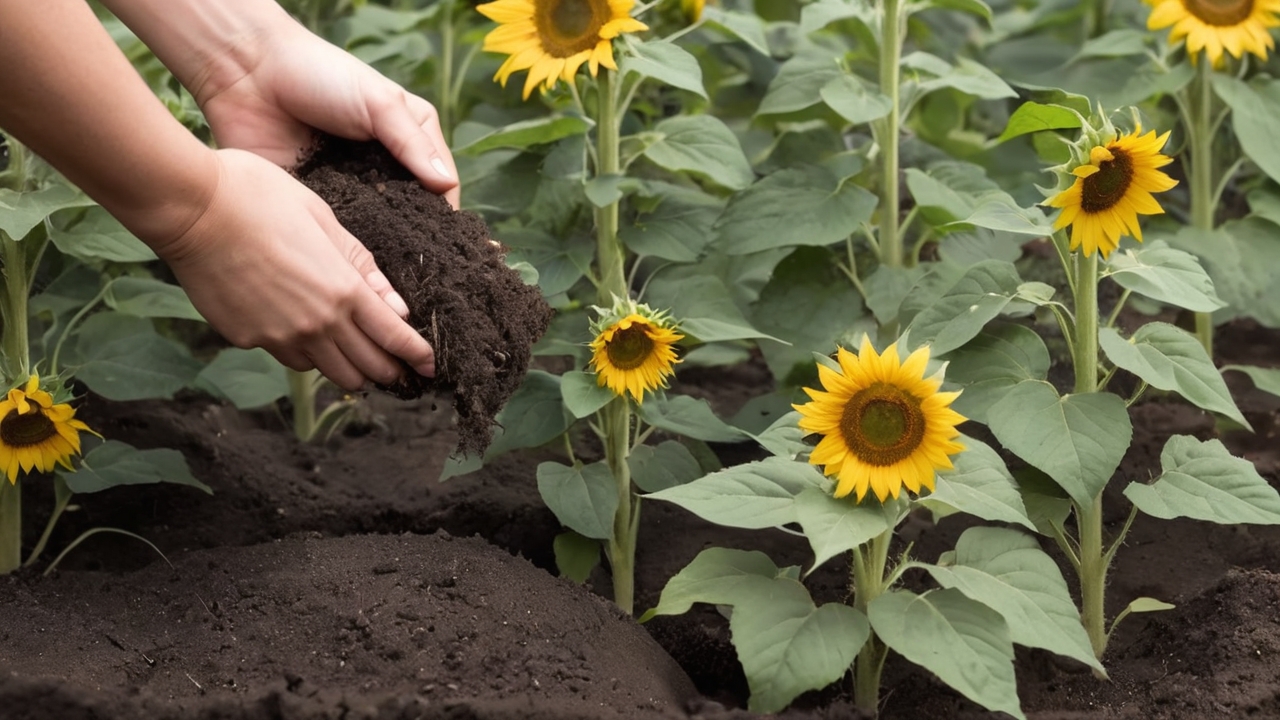
Watering:
Continue to water your sunflowers gently, keeping the soil consistently moist. Ensure that you water the soil and not the leaves to prevent fungal diseases. To supply the required nutrients, apply the fertilizer every two weeks.
Fertilizing:
After your seedlings have developed their first set of true leaves, you can start fertilizing them. Use a balanced liquid fertilizer diluted according to the package instructions. To supply the required nutrients, apply the fertilizer every two weeks.
Lighting:
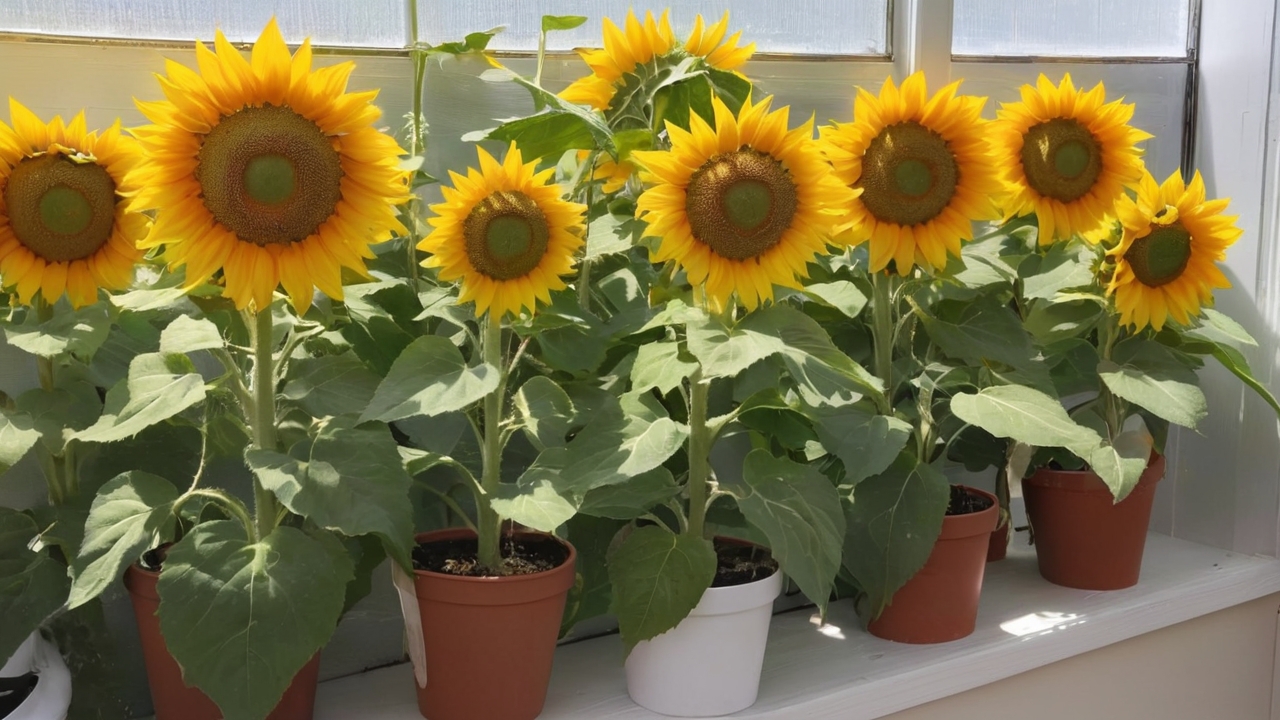
Sunflowers thrive in full sun, so it’s important to provide them with ample light. If you’re growing indoors, keep your seedlings under the grow lights for 14-16 hours per day. If they are near a window, rotate the containers regularly to ensure even light distribution.
Support:
As your sunflowers grow taller, they will need support to prevent them from toppling over. Consider using stakes or tying them to a trellis to provide stability.
Transplanting:
Once the risk of frost has passed and your seedlings have reached a height of about 8 inches, they are ready to be transplanted outdoors. Select a sunny area in your yard where the earth drains properly. Space the seedlings about 18 inches apart to allow for proper growth.

By following these care and maintenance tips, you’ll soon see your sunflower seedlings flourish into beautiful and majestic plants. In the next section, we’ll discuss some common problems that you might encounter while growing sunflowers and how to troubleshoot them. Stay tuned for more gardening advice!
Transplanting and outdoor preparation
Transplanting your sunflower seedlings outdoors is an exciting step towards seeing them thrive in the garden. Before moving them outside, it’s important to prepare the outdoor space properly.
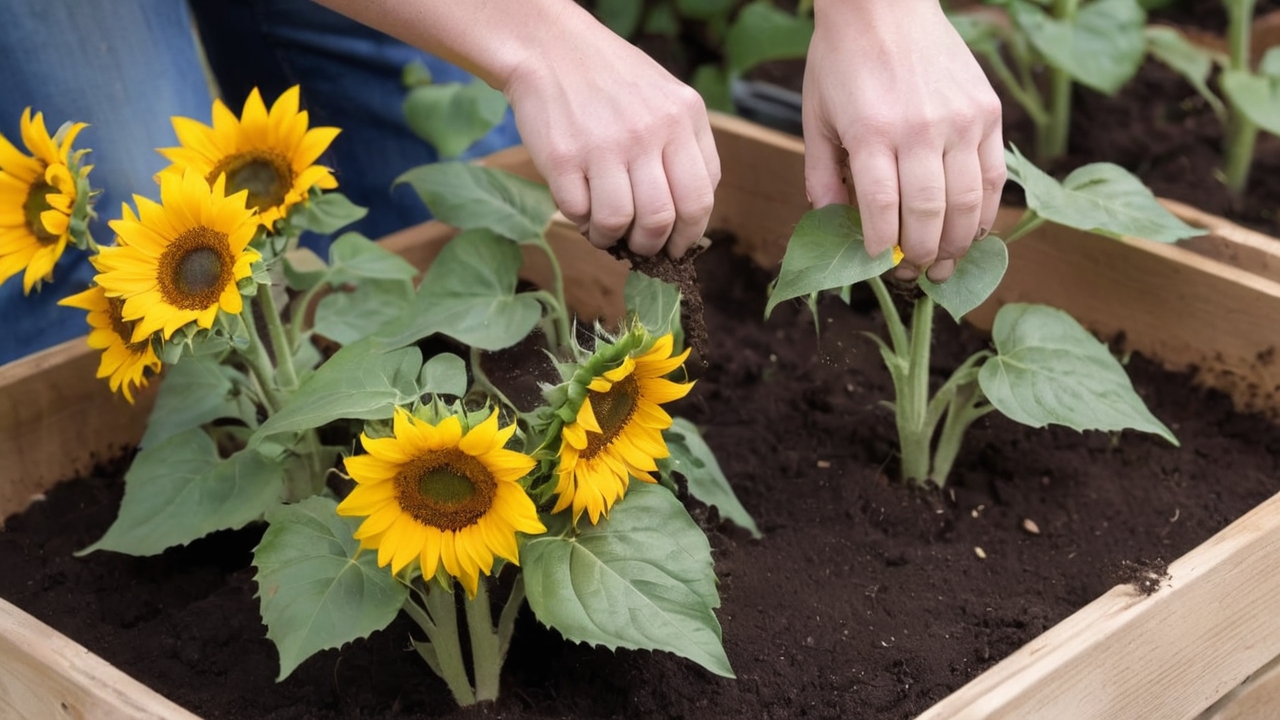
Select a sunny area in your yard where the earth drains properly. Sunflowers require full sun, so find an area that receives at least six hours of direct sunlight per day. If you’re planting multiple sunflowers, make sure to space them about 18 inches apart to allow for proper growth and airflow.
Use a garden fork or tiller to loosen the soil and remove any weeds to prepare the ground. To enhance soil fertility and drainage, add organic matter, such as compost or well-rotted manure.
Once the risk of frost has passed, which is usually in late spring, your sunflower seedlings should have reached a height of about 8 inches. Dig a hole in the garden that is slightly larger than the root ball of each seedling. Take care not to harm the seedlings’ roots when you carefully remove them from their pots. After planting each seedling in a hole, fill it in with dirt, gently compacting the earth around the root.

Water the transplanted sunflowers thoroughly to help them adjust to their new environment. Continue to water them regularly, keeping the soil evenly moist but not waterlogged.
In the next section, we’ll discuss common problems such as pests and diseases that may affect your sunflowers and how to deal with them effectively. Stay tuned for more tips on cultivating healthy sunflowers!
Final tips and considerations
Now that you have successfully transplanted your sunflower seedlings outdoors, there are a few final tips and considerations to keep in mind to ensure the health and growth of your plants.
Mulch:
Applying a layer of organic mulch around the base of your sunflowers can help retain moisture in the soil, suppress weeds, and regulate soil temperature. Use straw, grass clippings, or shredded leaves as mulch, and be sure to keep it a few inches away from the stem to prevent rotting.

Support:
As your sunflowers grow taller, they may require some support to prevent them from bending or breaking under their own weight. Install stakes or a trellis near the plants early on to provide the necessary support, and gently tie the main stem to the support structure as the plant grows.
Watering:
While sunflowers are generally drought-tolerant, they still require regular watering, especially during dry spells. Water at the base of the plant in the morning or evening to prevent moisture loss through evaporation. Avoid overhead watering as wet leaves can encourage diseases.
Fertilization:
Sunflowers are not heavy feeders and typically do not require much additional fertilization. However, if your soil is poor in nutrients, you can apply a balanced, slow-release fertilizer once or twice during the growing season. When applying fertilizer, make sure to follow the directions on the container since doing so may cause overgrowth of foliage at the price of bloom output.

Pests and diseases:
Keep an eye out for common pests such as aphids, slugs, and snails. Use organic pest control methods such as manually removing insects or using insecticidal soaps to minimize damage. Diseases such as powdery mildew and downy mildew can also affect sunflowers, so ensure good air circulation and avoid overhead watering to reduce the risk of fungal infections.
By following these final tips and considerations, you will be well on your way to enjoying a beautiful and thriving sunflower garden. Stay tuned for more gardening tips and advice in our future blog posts. Happy gardening!
FAQ
What are the most common challenges when starting sunflower seeds indoors?
When beginning sunflower seeds indoors, the following are some typical difficulties:
Too little moisture Keep the soil damp but not soggy. Sunflower seeds need just the right amount of moisture to sprout.
Not enough light. Because sunflowers need a lot of light to thrive, make sure they get at least 6 to 8 hours a day in direct sunshine. If natural light is not available, use grow lights.
Congested areas. Poor growth and development may result from overcrowding the seedlings. Avoid packing too many seeds into a single container and ensure that the seedlings are adequately spaced.
Insects and disease. Pests and illness can harm sunflower seedlings, which can hinder their development. Maintain a pest-free and hygienic growth environment.
Shock after transplant. Sunflower seedlings may experience stress while transplanting, which may result in transplant shock. Take care to prevent harming the roots by adhering to the correct transplanting techniques.
